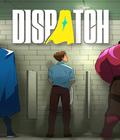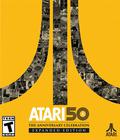A new installment in the famous Theatre of War series, which goes beyond World War II.
In this title tactical engagement experts can test their skills on a new strategic level. Move your forces over the entire Korean Peninsula, managing reserves, as well as the fuel and ammo supply. Tactical battles in Theatre of War 2: Korea are generated based on the historical situation.
Key features:
- A new strategic mode greatly enhances the experience of tactical battles
- Non-linear dynamic campaigns, a first for the series
- Unique landscape modeling for correct infantry combat simulation
- New units: helicopters with helicopter-borne infantry in both tactical and strategic modes
- Updated control system focusing more on squads and not on individual soldiers
- Engineer Corps: real-time mining and demining
- New binocular view feature for total immersion
- Detailed replication of authentic Korean landscape and architecture
Theatre of War 3 - Korea features two major campaigns: the North Korean «The Leap of the Tiger» and the U.S. «Counteroffensive» campaigns, both of which are played on the new strategic overlay.
The Leap of the Tiger
In June 1950, North Korean troops, supported by artillery, crossed the 38th north parallel and invaded the Republic of Korea. Their army consisted of 135,000 soldiers, 150 T-34-85 tanks, and other military hardware. South Korea managed to call up 150,000 soldiers, though it lacked armored vehicles and aircraft. The North Korean advance was largely successful. On June 28, they captured Seoul, the capital of the Republic of Korea. But then, from July 3 onwards, by the decision of the UN Security Council, UN forces, mostly consisting of US troops, joined the conflict on the side of South Korea. Nevertheless, they could not push back the attack of the North Koreans, who on August 20 reached Pusan, the Republic's southernmost province.
Historical outcome:
In the first 82 days of the Korean War, the Korean People's Army marched south of the 38th north parallel, sweeping away all South Korean troops that stood in their way. From the beginning of September, the Korean People's Army waged an all-out offensive, defeating South Korean and US forces, and securing 90% of the country and 92% of the population. During this first stage of the war, US military command pulled in a huge numbers of aircrafts and ships, five infantry divisions, several independent infantry regiments, five High Command Reserve artillery regiments, and four separate tank battalions. In addition, US military command undertook a number of urgent measures to reinforce the South Korean troops with both military hardware and personnel. Nevertheless, they were unable to withstand the onslaught of the Korean People's Army, and the US forces were forced to retreat. The Korean People's Army was a hair's breadth from seizing the entire Pusan area, but they lacked airborne and naval forces, and were suffering significant casualties, including losses of tanks and artillery.
Counteroffensive
Thanks to the superior air and artillery support of UN Command, North Korean troops failed to break through the Pusan Perimeter and drive its defenders into the sea. On the contrary, the powerful counterattack launched by the US and South Korean army forced North Korea to abandon a number of its key positions. By mid-September of 1950, the North Koreans were entirely on the defensive.
Having secured the area of Pusan, South Korean forces began planning their counteroffensive. They would destroy the North Korean troops and occupy the whole of Korea.
The plan called for two strikes: the first by ground troops delivered from the Pusan area, and the second by seaborne troops from Incheon. Together, they would encircle and destroy the North Korean troops in South Korea.
On the main axis of advance, UN Command deployed six infantry divisions, one infantry brigade, three independent artillery divisions, and three independent armor battalions. Air support was to be provided by as many as 1100 attack aircraft. The Incheon landing was to be secured by the US X Corps, comprised of the 1st Marine Division (US), the 7th Infantry Division (US), the 41 Commando (Great Britain), and the 17th Infantry Regiment (Republic of Korea). Their support was to be provided by 250 ships and some 500 aircraft.
The counteroffensive was launched on September 15, 1950.
Historical outcome:
The UN and South Korean forces were unified under a common goal – the destruction of the North Korean forces, and the rectification of borders. They were determined to push the North Koreans back across the northern borders of the Democratic People's Republic of Korea, and they were successful. It was an astonishing reversal, and could only have been accomplished with the full cooperation of ground, air, and naval forces, who delivered coordinated, simultaneous strikes to the front, flanks and enemy rears, with the support of numerous air and artillery units. Their personnel and military hardware superiority served them well, for the enemy lacked air defenses, artillery, and tanks.
Units and weapons overview
The North Korean army and Chinese volunteers mostly used Soviet WW2-era weaponry in the war, including T-34-85 and IS-2 tanks.
The other major combatant in the game, the US Army, has access to a vast list of weapons and support assets, including transport helicopters and superior support aircraft.
In addition to the North Korean and US forces, there is a third side available in the game – the USSR army. It’s not used in stock campaigns since the USSR did not participate in the conflict directly, but we included it anyway so you can create “what-if” scenarios and campaigns where the USSR and USA forces actually meet face to face, and the cold war turns hot.
The USSR army represented in the game fields many of the units and weapons that are available for the North Koreans as well (except the obsolete ones), but in addition it can field latest additions to its arsenal that were available in 1950 – T-54 tanks, SKS carbines, RPG-2 launchers, AK assault rifles and more.
Editing and modding capabilities
In addition to the tools already known to players of previous games, like the Mission Generator, Simple and Full Mission Editors, and the 3D Map Editor, ToW3 has specific editors for handling the newly introduced strategic mode.
First of all, there is the new Campaign Generator that allows you to conveniently choose the sides of a conflict, set the starting zones, add or exclude zones from the campaign, give players battle groups and support, etc.
In addition, modders can create totally new strategic layer maps. To do this, several layers of a new map must be prepared in a graphics editing software like Adobe Photoshop or GIMP and then the game is launched in a special Strategic Campaign Designer Mode, converting and automatically dividing a source map into separate zones and allowing you to set links between them manually.
More articles about Theatre of War 3: Korea


















